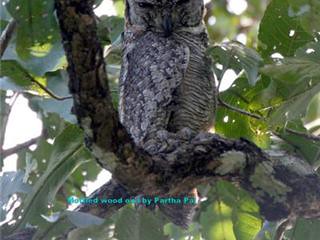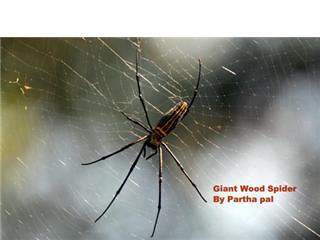Posted by
Susan Sharma
on
January 27, 2008
A Wildlife Conservation Society (WCS) study revealed that man and nature are threatening at least six distinct species of the African Giraffe, which are highly endangered and could face extinction if not protected.
The extinction threat was real since giraffes are listed as lower risk in the World Conservation Union (IUCN) Red List, "under the assumption that giraffe species are considered a single species and therefore managed as such".
"Severe poaching and armed conflict in Somalia, Ethiopia and Kenya reduced the number of reticulated giraffes from about 27,000 individuals in the 1990s to currently fewer than 3,000 individuals over the past decade."
|
Posted by
Susan Sharma
on
January 23, 2008
Cigarette butts, snack wrappers and take-out food and beverage containers are the most commonly littered items. Cigarettes are one of the most insidious forms of litter: Each discarded butt takes 12 years to break down, all the while
leaching toxic elements such as cadmium, lead and arsenic into soil and waterways.
|
Posted by
Susan Sharma
on
January 23, 2008

Dams Coming Down
Two years of closed-door negotiations between farmers, Indian tribes, fishermen, conservation groups and government agencies have resulted in an unprecedented (but very conditional) agreement
to remove four hydroelectric dams now operating along an embattled 300-mile stretch of the Klamath River in southern Oregon and northern California. The goal of the dam removal is to restore runs of the now-endangered salmon that were once plentiful in the
region and to re-assign contentious water usage rights throughout the region accordingly..............
...........................................
Though it was once the third-most productive salmon river on the West Coast, the Klamath has suffered over the last several decades as a result of misguided hatchery practices, overfishing,
development and the loss of habitat to dams, mining and logging. For the dams to actually be removed, the federal government would have to approve the dam removal plan (and put up the estimated $400 million to cover costs). Then, if dam owner PacifiCorp (a
major regional utility) is willing to go along with the plan, the dams could be removed as soon as 2015.
Source:
http://www.emagazine.com/view/?4054
|
Posted by
Susan Sharma
on
January 22, 2008

Thattekhad “ The” Birding destination of South India-Dec 2007 ( Part I)
-Posted by Partha Pal in Delhibird yahoo group
Roughly 25 odd square kilometer of area but it boasts of 270 species and above. Two and half days of birding yielding 33 lifers and the greed to continue was still there,
unfortunately time didn’t allow.
Reached Thattekad around 11 a.m . Ashy wood swallow were the first ones to greet perched on the wire across the river. Happy with the good omen I continued and reached the sanctuary gate.
Sudeesh the young guide who is under tutelage of Eldhose was wating for me at the sanctuary gate. Since Eldhose was already booked for that day Sudeesh took me around for the first part of the day . My staying arrangements were done with a family who lives
within the sanctuary. Fresh home food and family atmosphere, very good host added to the good birding. The lady of the house Mrs.Sudha and other family members were extremely nice and caring. Incidentally her son is lawyer and also a
birding guide . His free time is taken up as birding guide.
My first foray into the forest - actually before that ,just next to the gate
a pair of brown hawk owl were roosting.(1st lifer of the trip) 12 hours of bus journey in normal circumstances I would have been sleeping like a log but here I was excited like a kid who has just been given a free hand. Late morning visit resulted in sighting
of five Srilanka frogmouth (really strange looking birds infact the way they sit still – just like statues.
Sudeesh advised that they won’t move unless you touch the bush they are sitting on.
We saw Giant wood spider with a huge web , fleeting yellow
browed bulbuls, Greater racket tailed drongo as common as black drongo in north, Bronzed drongo, Black napped monarch, Asian paradise Flycatcher, Forest wagtail and of course The Pit Viper (We managed to go as close as 12 inches . It lay lazily ,tummy was bloated
,must have good kill.




(Continued in next part)
|
Posted by
Susan Sharma
on
January 21, 2008

Organic farming combats global warming
Data from The Rodale Institute’s®
long-running comparison of organic and conventional cropping systems confirms that organic methods are far more effective at removing the greenhouse gas, carbon dioxide, from the atmosphere and fixing it as beneficial organic matter in the soil………..
The key lies in the handling of organic matter (OM): because soil organic matter is primarily carbon, increases in soil OM levels will be directly correlated
with carbon sequestration. While conventional farming typically depletes soil OM, organic farming builds it through the use of composted animal manures and cover crops………
"Agriculture and forestry are a very potent sink--they will make the emissions problem easier to get a handle on,”
Organic farming for carbon capture is also compatible with other environmental and social goals such as reducing erosion, minimizing impact on native
ecosystems, and improving farmer livelihoods.
Source:
http://www.newfarm.org/depts/NFfield_trials/1003/carbonsequest.shtml
|
Posted by
Susan Sharma
on
January 17, 2008

Thousands of chemicals have come on the market in the past 30 years, and some of them are showing up in people’s bodies in low levels. Scientists studying obesity are focusing on endocrine disrupters - which have already been linked to reproductive problems
in animals and humans - because they have become so common in the environment and are known to affect fat cells.
But could something in the environment also be making Americans fat in epidemic numbers?Animal studies in recent years raise the possibility that prenatal exposure to minuscule amounts of common chemicals - found in everything from baby bottles to toys -
could predispose a body to a life of weight gain. The chemicals, known as endocrine disrupters, mimic natural hormones that help regulate, for example, how many fat cells a body makes and how much fat to store in them.These findings have led some scientists
to put forth a provocative argument: They say diet and too little exercise clearly are key reasons for the worldwide rise in obesity in the past 20 years, but they may not be the only ones. Food intake and exercise just haven’t changed that much in that period,
they argue. And while genetics obviously play a role - just think of someone you know who can eat three Big Macs a day and never gain an ounce - these researchers say it would be impossible to see such widespread genetic change in just two decades, giving
them more reason to suspect the environment.
Source:
http://www.boston.com/news/health/articles/2008/01/14/is_plastic_making_us_fat/
|
Posted by
Susan Sharma
on
January 17, 2008

"In early 2007, thousands of cats and dogs in North America fell ill with kidney ailments. Many of the pets had dined chez Menu Foods Inc., a company in Ontario, Canada, that manufactures pet foods for more than 100 brands, including Procter & Gamble, Iams,
Colgate-Palmolive’s Science Diet, and Wal-Mart’s Ol’ Roy. By mid-April, investigators had traced the animals’ illnesses to melamine, an industrial chemical that tainted a few of Menu Foods’ raw ingredients. They then followed the thread to two suppliers in
China, which had spiked the ingredients to cut costs and boost profits.
So where should the public point its finger? Procter & Gamble, Colgate-Palmolive, Wal-Mart, and the many other corporations that own the pet food brands? Menu Foods, which mixed the kibble? The Chinese manufacturers, which adulterated the ingredients? The
U.S. Food and Drug Administration, which failed to detect anything amiss? The stores that didn’t remove the foods from the shelves, even after Menu Foods recalled them? "
Read the full article at
http://www.ssireview.org/articles/entry/the_responsibility_paradox/
|
Posted by
Susan Sharma
on
December 27, 2007
Watch a poignant short clip on "Silent Night", the most popular Christmas Song of all times, at the link http://www.youtube.com/watch?v=iQFWEc7I_jk
|
Posted by
Susan Sharma
on
December 20, 2007
ERIC NEE: What are the differences between traditional grant giving and using prizes as a way to stimulate social change?
THOMAS VANDER ARK: Quite simply, it’s the difference between push and pull. Traditional philanthropy is a push mechanism. You pick an organization, you make an investment, you may provide advice and performance management, and you hope that they are successful
and that the sector evolves as you had anticipated. Prize philanthropy is a pull mechanism where you set a goal, invite the world to compete, and hope to be surprised by the new money, the new minds, and the new methods brought to the competition.
Source:
http://www.ssireview.org/articles/entry/15_minutes_with_thomas_vander_ark/
See the link (Wildlife Quiz)
http://www.indianwildlifeclub.com/ezine/detail.asp?at_id=564&m=12&y=2007
for IndianWildlifeClub’s prize program!
|
Posted by
Susan Sharma
on
December 20, 2007
|
 ©
IFAW/WTI ©
IFAW/WTI
|
Elephants that migrate through human populated areas of India are bound to enter into conflict with farmers and other land owners. Considering there is no "safe haven" or isolated area in all of India that is free of human habituation, elephant and human
conflict in inevitable. Living in such close proximity to each other has resulted in hundreds of animals falling into man-made ditches ("traps") and has caused others to be hit by cars.
The image shown here displays the ugly and cruel side of this conflict. The poisoning of migrating herds is a common tool used to rid of them completely. The elephant here is a victim of poisoning who also had a message carved into the side of it’s hide
that reads: "Paddy thief, elephant Laden". The culprit of this poisoning is equating these endangered animals with terrorists.
Source:
http://www.animalrescueblog.org/2007/12/ifaw-elephants.html
|